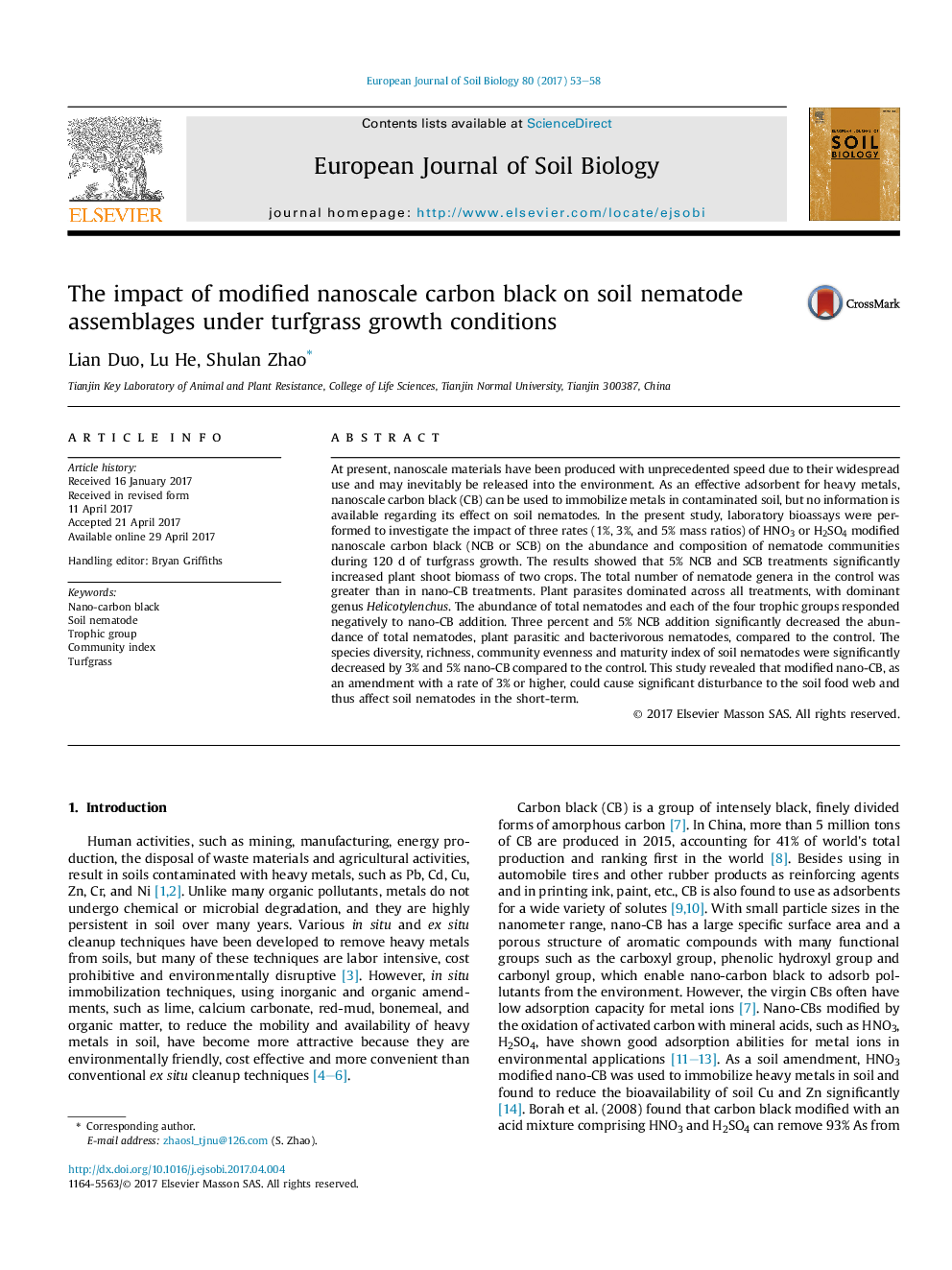| Article ID | Journal | Published Year | Pages | File Type |
|---|---|---|---|---|
| 5744219 | European Journal of Soil Biology | 2017 | 6 Pages |
â¢Modified nano-CBs negatively affected the abundance of total nematodes and each of the four trophic groups.â¢The diversity, evenness, richness and maturity indices of soil nematodes were decreased by 3% and 5% nano-CBs.â¢1% modified nano-CB did not affect soil nematode abundance and diversity significantly.â¢Modified nano-CBs with a rate of >3% could cause significant disturbance to soil nematodes in the short-term.
At present, nanoscale materials have been produced with unprecedented speed due to their widespread use and may inevitably be released into the environment. As an effective adsorbent for heavy metals, nanoscale carbon black (CB) can be used to immobilize metals in contaminated soil, but no information is available regarding its effect on soil nematodes. In the present study, laboratory bioassays were performed to investigate the impact of three rates (1%, 3%, and 5% mass ratios) of HNO3 or H2SO4 modified nanoscale carbon black (NCB or SCB) on the abundance and composition of nematode communities during 120Â d of turfgrass growth. The results showed that 5% NCB and SCB treatments significantly increased plant shoot biomass of two crops. The total number of nematode genera in the control was greater than in nano-CB treatments. Plant parasites dominated across all treatments, with dominant genus Helicotylenchus. The abundance of total nematodes and each of the four trophic groups responded negatively to nano-CB addition. Three percent and 5% NCB addition significantly decreased the abundance of total nematodes, plant parasitic and bacterivorous nematodes, compared to the control. The species diversity, richness, community evenness and maturity index of soil nematodes were significantly decreased by 3% and 5% nano-CB compared to the control. This study revealed that modified nano-CB, as an amendment with a rate of 3% or higher, could cause significant disturbance to the soil food web and thus affect soil nematodes in the short-term.
